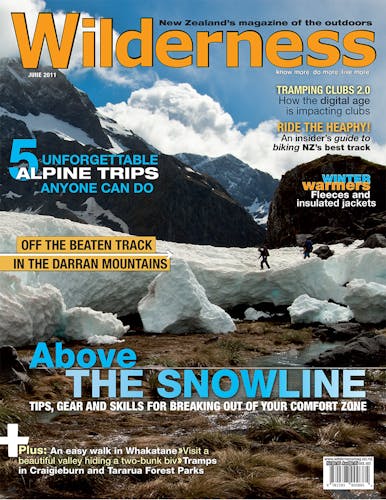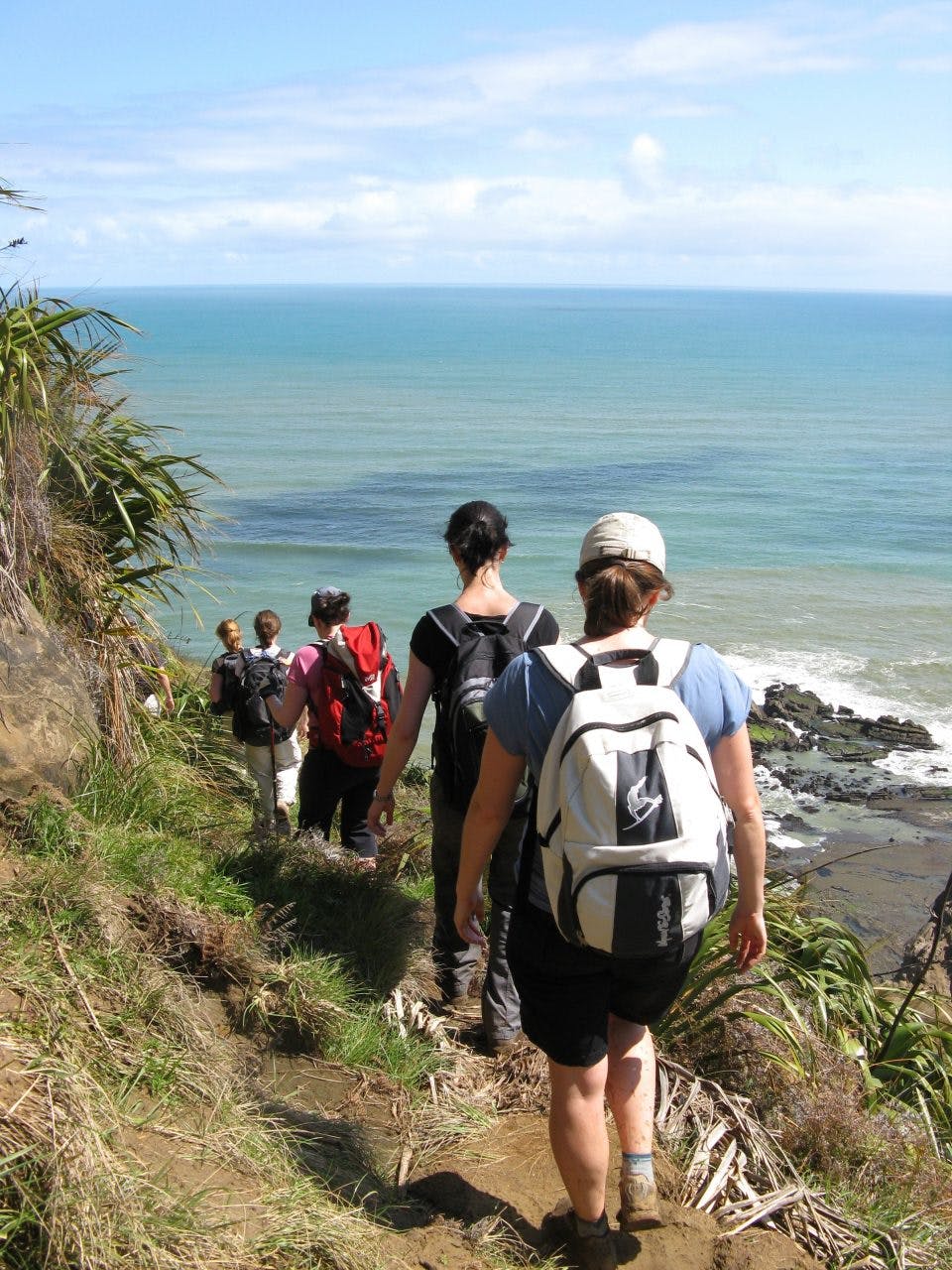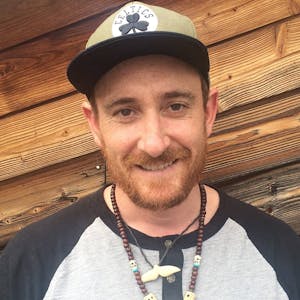In the fast-moving digital age, traditional tramping clubs are struggling to adapt and recruit new and younger members. Josh Gale looks at what they’re up against in the wired world
When seven keen trampers sat together at the bottom of Rangitoto Island’s crater in 1925 they had no idea 86 years later about 3000 satellites would be orbiting in space above them.
The seven men made the trip to the crater thanks to an advertisement placed in the New Zealand Herald on October 9, 1925 by Adrian Moulton.
Moulton wrote: “Anyone interested in the formation of a Tramping Club write A. Tramp Esq., Herald Office.”
He received 14 replies and then held a meeting where it was decided to skip church the following Sunday and meet in the crater instead.
Sitting on the porous basaltic rock and surrounded by the largest pohutukawa forest in the world, the well dressed men served tea and agreed to form the Auckland Tramping Club.
Moulton originally intended the club to be men only, but liberalism won the day and women were allowed to join too.
Had those chaps been able to hop on a time machine and set the dial for 2011, they would probably be in need of a stiff drink.
Back in 1925 the Radio Broadcasting Company had just begun its first national broadcasts, television was the stuff of science fiction and the automobile still a novelty.
The New Zealand Herald only had a print edition, whereas now it has online and digital editions, plus social media channels.
The space race and the spin-off technological gains that created global connectivity were beyond the imagination of all but the wildest sci-fi writers of the day.
This rapid change has, among many other things, caused traditional clubs like Moulton et al’s Auckland Tramping Club to go through difficult times and to face uncertain futures.
These days there’s no need to run newspaper ads to form or find a group to go tramping with because the Internet, email, social media and cell phones make it easy and instant.
In a 2009 study into outdoor participation, the Mountain Safety Council (MSC) stated that only a core group of ageing tramping club members is being maintained and this is growing only slightly.
‘The probability is that the proportion of tramping club members will decline if trends stay as they are,’ the study predicted.
Social trends such as an ageing population, urbanisation, the growing popularity of passive at-home activities and a switch in preference to low time-cost outdoor activities done closer to home all affect the relevance of tramping clubs.
Information from Federated Mountain Clubs (FMC) shows the number of club members boomed in the late 1950s and early 1960s before nose diving until the early 1990s when the numbers slowly began picking up again.
FMC President Richard Davies says it’s not only tramping clubs that have been finding it harder to attract new members.
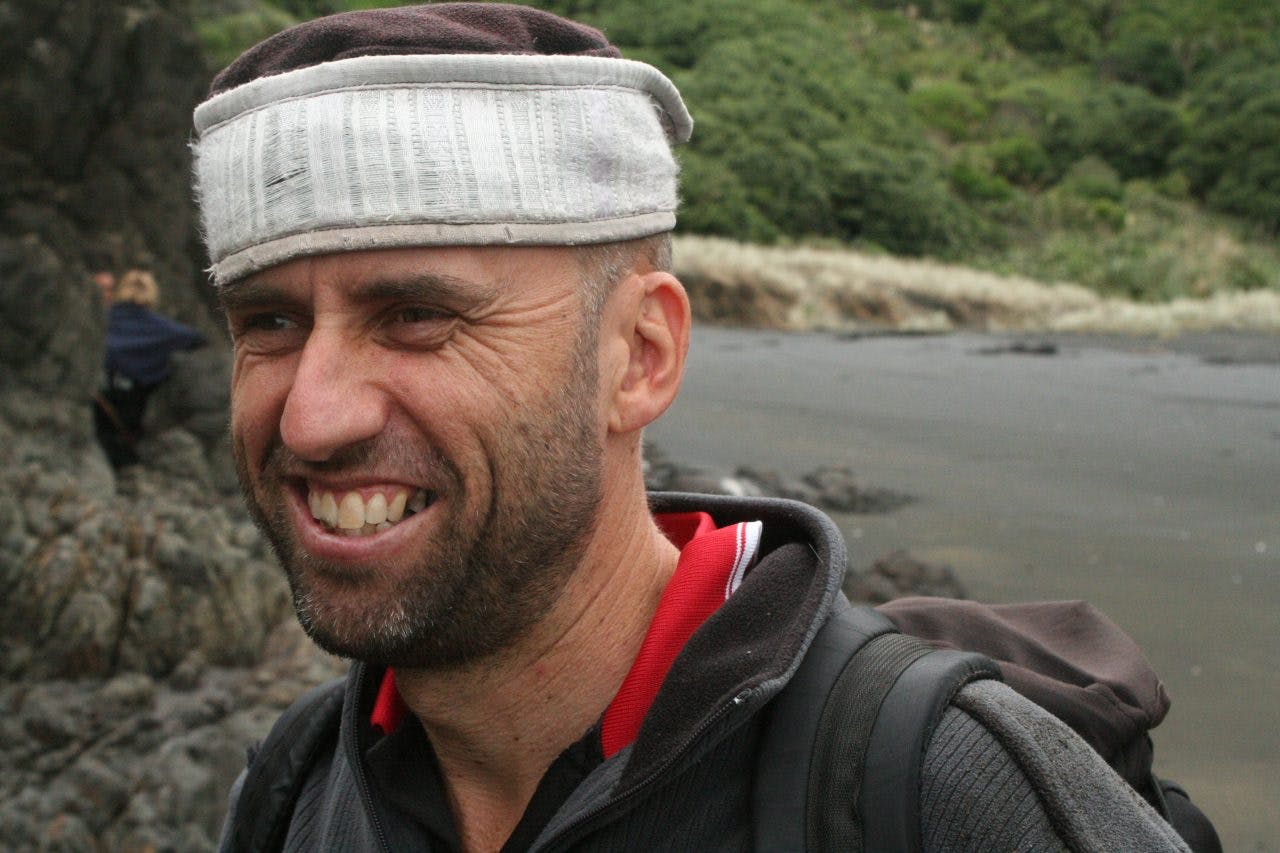
Stephen believes difficult trips may turn people away. Photo: Josh Gale
“For several decades now there has been a trend towards people playing sport independently of clubs – be it bowls, tennis, sailing or tramping,” says Davies. “Having said that, a number of [tramping] clubs are quite large with stable membership, renewal of members and are very active in the hills. So it is far from a dismal picture.”
Despite some exceptions, many tramping clubs do have a declining and ageing membership and find it difficult to attract younger members.
“Many of our provincial towns have declining young populations,” explains Davies. “People leave school for university, better paying jobs in the cities or even OEs so it is not surprising tramping clubs in these areas don’t have many young members.
“It is really only in the larger centres that there will be enough people to run a club that spans multiple generations and multiple kinds of trips,” he says.
The Wellington Tramping and Mountaineering Club (WTMC) is one of the rare examples of a club with a young membership. WTMC promotions officer Megan Banks says the club fluctuates between 400 and 500 members and the average age of its active members has always been between 20 and 40.
Banks says the club strives to be inclusive and to move with changing times. It has, for example, embraced social media: “We have an active discussion forum on the website, use email for trip organisation and use Google Documents for collaborative trip schedule planning. We have many members who are keen technology users and share photos on sites like Facebook, Flickr and Picasa.”
However, Banks points out the very fact WTMC has a younger membership to start with acts as a magnet to attract more younger people.
Tramping clubs in Auckland, however, don’t benefit from the same law of magnetism. Auckland Tramping Club publicity officer Graeme McGowan says his club has lost 20 per cent of its membership in the last 10 years and approximately 80 per cent of Auckland Tramping Club’s members are 50-plus.
The club’s peak was in 1986 with 569 members, then it dropped to 428 members in 1991, rose to 493 in 2001 before falling to its current 400 members.
“What is also significant is that in 1986 we had 59 youth members, but this declined to three by 1998 and today stands at four,” McGowan says.
He puts all of this down to a variety of factors such as the birth of the Internet, email and Facebook which has changed the way people communicate.
Aucklander Chris Manders, for example, is a keen tramper, but doesn’t even know what clubs the city has on offer.
But as a peculiar example of changing times, Manders is a member of the most populated hiking group in Auckland.
There’s no cost to join this group or to go on the hikes. There’s also no constitution, committee, forms to complete or many safety precautions.
Whereas the Auckland Tramping Club began in 1925 with seven members and now has 400, the group Manders belongs to began in 2006 and already has 965 members and often has up to 45 people going on trips together.
And unlike Adrian Moulton’s visit to the Herald office in 1925 to place an ad, the founder of Mander’s group simply went online and clicked a few buttons.
The Auckland Hiking Group is one of a handful of tramping, hiking, adventure groups in Auckland and Wellington that has formed on the social media website Meetup.com which describes itself as ‘the world’s largest network of local groups’.
More than just outdoor recreation groups, the social media website has all sorts of activity-based groups ranging from knitting to web development, from singles nights to philosophy groups.
‘Meetup makes it easy for anyone to organize a local group or find one of the thousands already meeting up face-to-face,’ the website states. ‘Meetup’s mission is to revitalize local community and help people around the world self-organize.’
Manders says Meetup is an “instant organising tool” and makes events “incredibly accessible”.
Visitors to the website enter their interest – tramping for example – and the city or town they want to do it in and all the related groups in the area come up, each with information including its purpose, member reviews, polls, maps, photos, upcoming events, comments and member ratings of each event the group runs.
It automatically sends emails to members about event updates and connects to Facebook and Twitter.
‘We help people use the internet to get off the internet’ the website claims.
Meetup is popular around the world, but in New Zealand only Auckland and Wellington have embraced it.
Manders enjoys going on the group’s regular hikes which he says are “organised and well described”.
“I meet really interesting groups with lots of people from overseas with incredibly diverse backgrounds,” he says.
“It’s a very social activity and gives people the chance to talk all day or just enjoy being outdoors.”
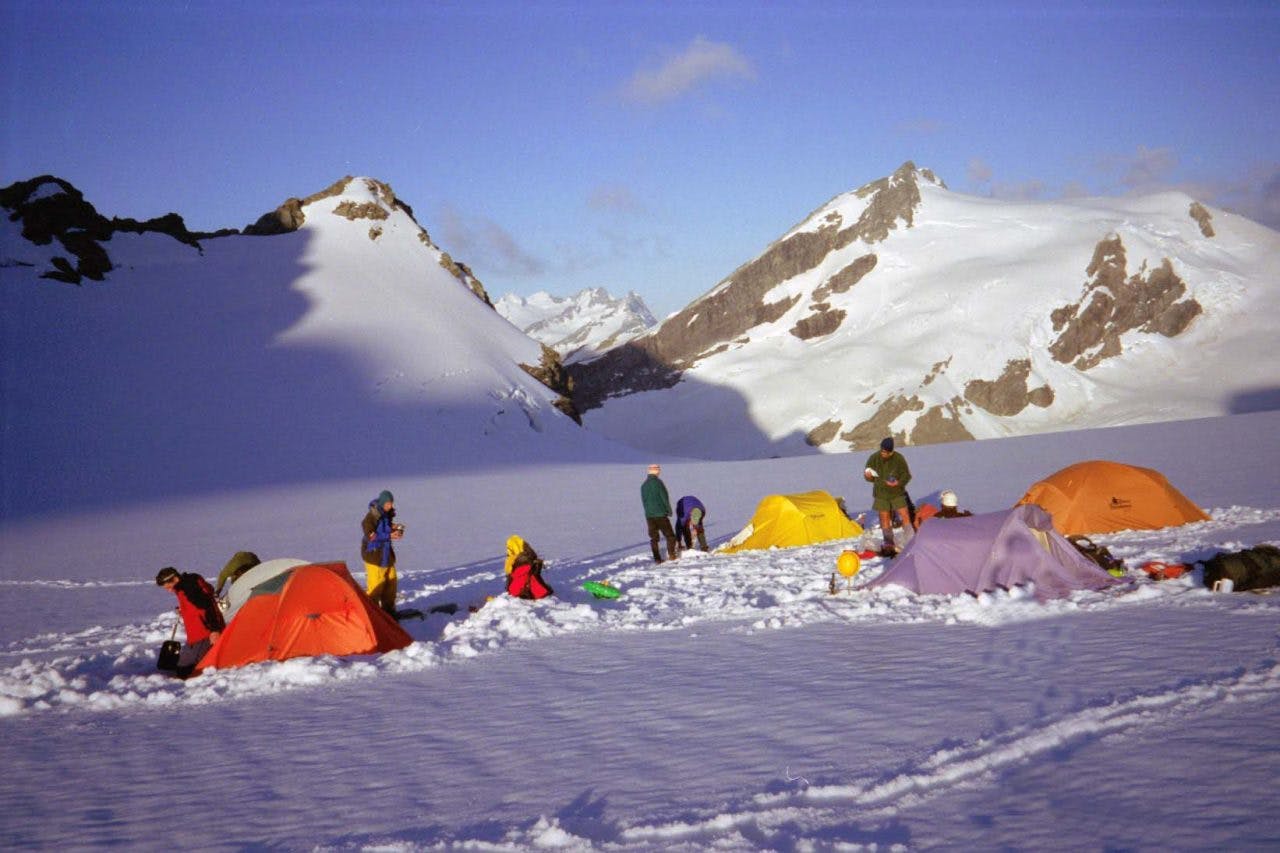
Tramping clubs provide opportunities for more difficult trips where valuable skills can be learnt, but according to Stephen Hawkins, this is what turns many people away. Photo: Josh Gale
Auckland Hiking Group organiser Stephen Hawkins is a computer programmer by day and uses his spare time to run the hiking group and participate in three other Meetup groups.
He says the members born abroad outnumber the New Zealand-born members and most of them are aged between 25 and 50.
“You get people coming from overseas who have Meetup groups where they come from so they check out what’s in Auckland. Or they just look up hiking on the Internet and see what comes up,” Hawkins says.
“We’ve had someone who flew in from the US at six in the morning and came on a hike that same morning. From there she met people who for the next couple of days went on other hikes with her.
“It opens up opportunities for things like that.”
On a stormy Sunday on Auckland’s wild west coast, I join 24 Auckland Hiking Group members from nine different nations to hike from North Piha Beach to Anawhata and back.
Even though there are only half a dozen Kiwis, many of the others have migrated to New Zealand permanently. Alan Sarafa immigrated to New Zealand from the US and searched for hiking groups when he got here.
“Meetup had the only hiking groups I could find,” says Sarafa. “I have not been in a traditional club, but this group just seems more comfortable to me because there are people from other countries and definitely new people every meet up. I don’t really feel out of place.”
As we enter the damp forest track that winds up a ridge and down to Whites Beach, it becomes clear that while this group enjoys hiking it is very different to a tramping club.
The going is much slower, people stop regularly to take photos, chat and mix and mingle. This suits Hawkins, who says his perception of tramping clubs is that they are less social than his group.
“It’s a feeling that they’re keen to focus on the actual walking and are often keen to do it as hard as they can,” he says.
Stephen French is the organiser of another Auckland-based Meetup hiking group with 211 members and a similar age group as Hawkin’s.
He says traditional tramping clubs have lost touch with what people want.
“They’ve come from the old school where a day’s tramping was about saying ‘hey, the last group did this in five hours let’s do it in three-and-a-half’,” French says. “They have their own buses, their own dedicated drivers and hierarchy and people get put off by that. They have these very fixed agendas and that’s just how they operate.
“They’ve been in that mould of fitness for so long that they don’t know what it is to slow down.”
French also believes that while clubs haven’t changed, the people many of them wish to attract have.
“They want to say what’s on their minds and if they have an interest like I have in photography they want to stop to take a photo.
“If you did that with a tramping club you’d be shunned.”
Graeme McGowan from the Auckland Tramping Club says some of these criticisms are valid.
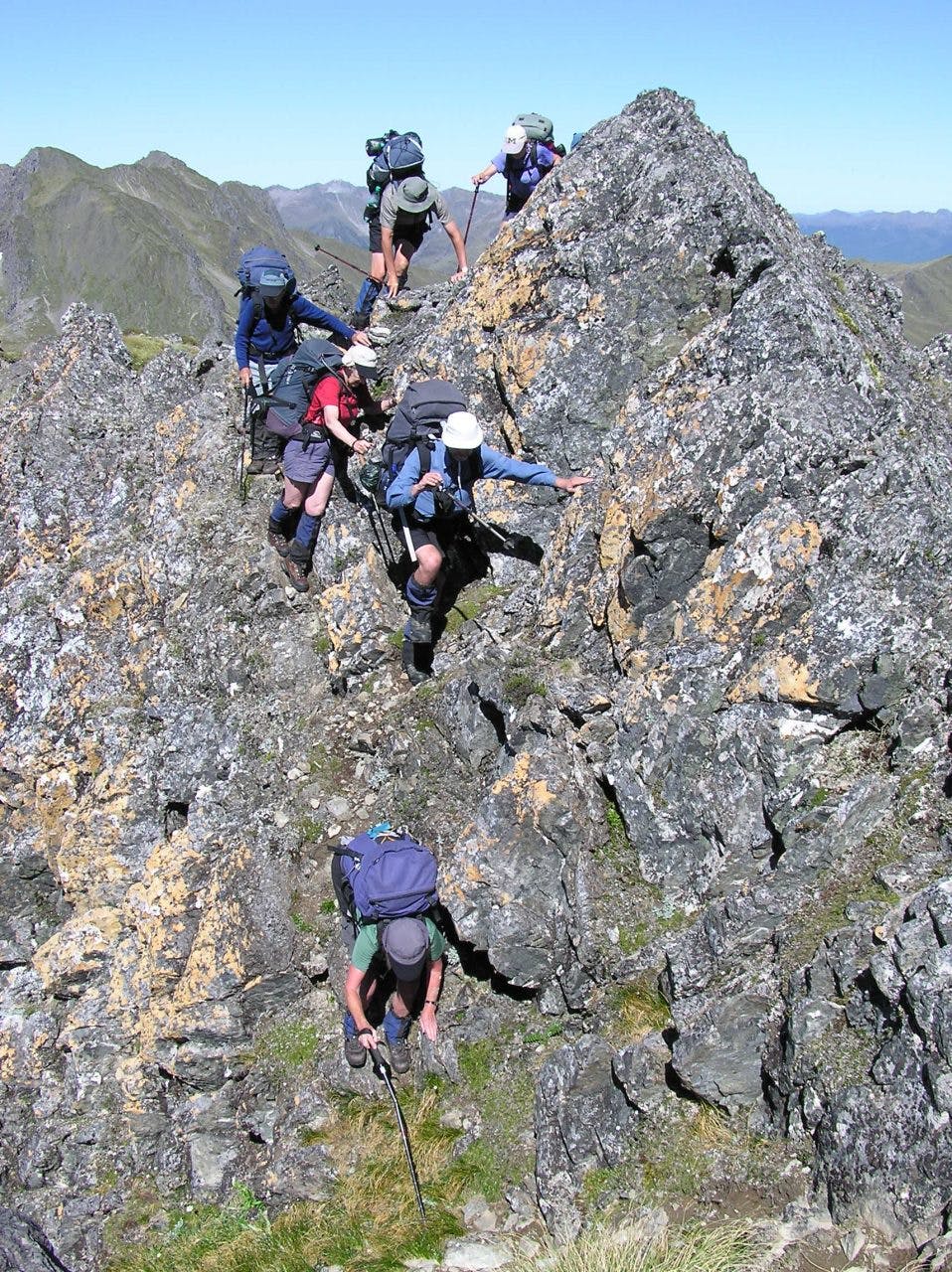
It takes experience and confidence to handle tramps into the backcountry – an advantage traditional clubs have over upstarts. Photo: Graeme McGowan
“It has come up time and time again at committee meetings. We’ve had people emailing us to tell the club the pace is too much,” he says. “I’ve seen it in new peoples’ faces. They’re looking and thinking ‘this is a lovely piece of bush, but mostly I’ve only seen my boots because I have to keep up’.
“We’ve got people in the club with botany experience and they see some great things, but half the people have gone by because they don’t care. It’s such a pity.
“With a more mature group of people, change is not so fast coming and I’ve seen it a bit in the club. But if we don’t develop young people then the future of the club is dead.”
As with many other clubs, the Auckland Tramping Club has a rich history, experience and valuable assets such its bus, gear, a hut in the Waitakere Ranges and a ski lodge on Mt Ruapeahu all of which are too important to lose.
This concern for the future of the club is why McGowan and other committee members have encouraged the formation of an under 40s faction within the club.
The Youth and Under Forties (YUF) faction was started by Jane Dudley and now has 128 members on its Facebook group.
Dudley says many people are put off joining tramping clubs because they seem “rigid”.
“You have to sign up, fill out all these forms and have someone vouch for you,” says Dudley about the process to join the Auckland Tramping Club. “I’ve heard people complain about the fact you have to fill out multiple forms and post cheques. Nobody uses cheques anymore. It is a relic from older times.”
Embracing new technology like social media can also be an issue, says Dudley, because older club members don’t understand it.
Dudley developed the idea to start the YUF faction when she was working with FMC to identify ways to encourage younger people to join clubs. The trick, Dudley believes, is to encourage younger people to get “loosely involved” until they’re ready to formally join.
She uses Facebook and email to organise trips and tries to make trips more social. The group has its meetings at a pub in Mt Eden, does relaxed day walks as well as more difficult tramps and bush and snow craft courses.
Keeping clubs alive is an important “social service” says Dudley because they provide a community for people with a common interest.
Wellington Tramping and Mountaineering Club’s Megan Banks agrees formality can put new people off.
“The sense of fellowship that one can get in a club is important and a club with hierarchy or formal rules will be less likely to achieve this,” she says. “WTMC is an informal, relaxed club. It is easy for members to get on the committee and become involved and most members play some part, big or small, in helping the club run.”
FMC President Richard Davies says creating an under 40s faction, embracing social media and being more inclusive are steps clubs can take to build their memberships and attract younger people.
Davies says he has learned many valuable skills such as rock climbing, alpine climbing and bushcraft from traditional clubs and is wary of Meetup groups because he doesn’t have the same confidence in their skill levels.
“When I do a trip with random people from a club I am able to ask others about their skills and behaviour before I go on the trip, whereas Meetup would be truly random,” he explains. “As I tend to do harder trips that require a few more skills it would be risky for me to do a trip with people I have met on the Internet.”
Auckland Hiking Group organiser Stephen Hawkins agrees this is an important difference between Meetup groups and traditional tramping clubs. Even though he organises the hikes, Hawkins has no bushcraft training and doesn’t hold an outdoor first aid certificate.
“We just tell people what we’re doing and that everyone’s responsible for themselves,” he says. “We don’t do anything really dangerous.”
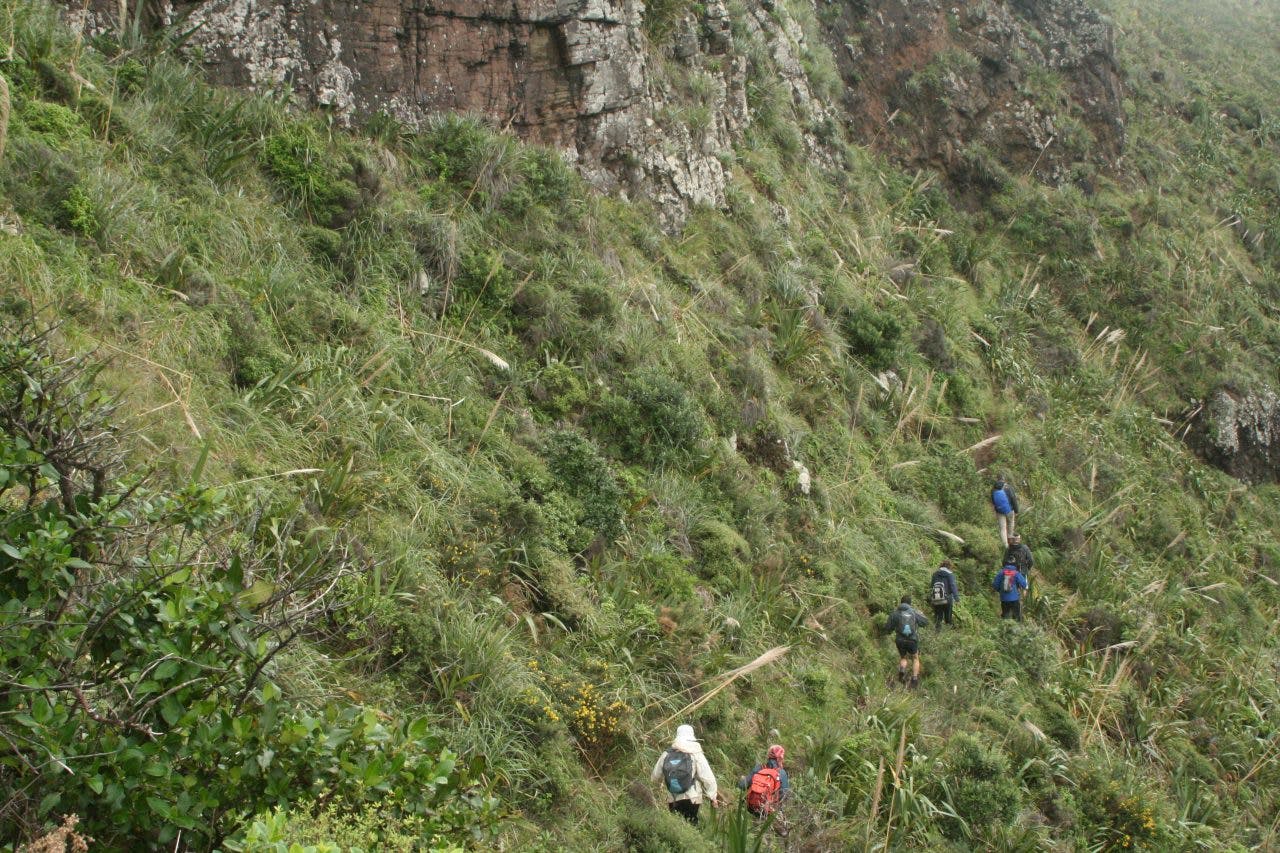
The sense of fellowship one can get in a club is important. Photo: Josh Gale
Out with Hawkin’s group on Auckland’s west coast, we negotiate a thin muddy track with a steep drop on one side, gaze out to sea from a cliff top and walk around the slippery rocks to Fisherman’s Rock which a handful of us climb.
On our return we find one of the group clutching her bloodied hand. Leena Kothare, 52, is a corporate banker who immigrated to New Zealand from India nine years ago. Kothare “felt giddy” early into the hike and later fainted, fracturing a finger as she tried to break her fall.
Wearing sneakers, denim shorts and carrying an awkward high school backpack, Kotare looked like an accident waiting to happen.
“It’s entirely my fault, I bit off more than I could chew,” she admitted. “I should have discussed the hike with Stephen first.”
Hawkins and some of the other group walked with Kotare back to the car park and drove her to the hospital.
Kotare says the accident hasn’t put her off the group. “In fact I’m looking forward to some less intensive hikes,” she says.
Most of the hikes Hawkin’s group do would be considered low intensity by many tramping clubs. The group does do multi-day hikes, but even these are much easier than the club standard.
And herein lies a key difference and an emerging development in outdoor language. In New Zealand, the word ‘hiking’ implies something easier than ‘tramping’, which is seen by many as a hardcore activity. Hiking is more relaxed and social.
When people visit New Zealand and want to find a group to get into nature with, they Google the latter, not the former. This is why many of them have never heard of the tramping clubs.
This gives credit to FMC President Richard Davies’ belief that many people don’t know tramping clubs exist or what they involve.
“Meetup groups have a place for people who want a buddy for an easy trip, but they shouldn’t replace the value that you can get out of a club,” he says. “The trick will be for clubs to market why they are better than a website like that.
“It is vitally important that clubs continue to promote themselves, as they offer the chance to develop skills and to run trips that aren’t possible to organise over the Internet.
“The tramping club culture is a unique part of New Zealand’s outdoors and long may it thrive.”





